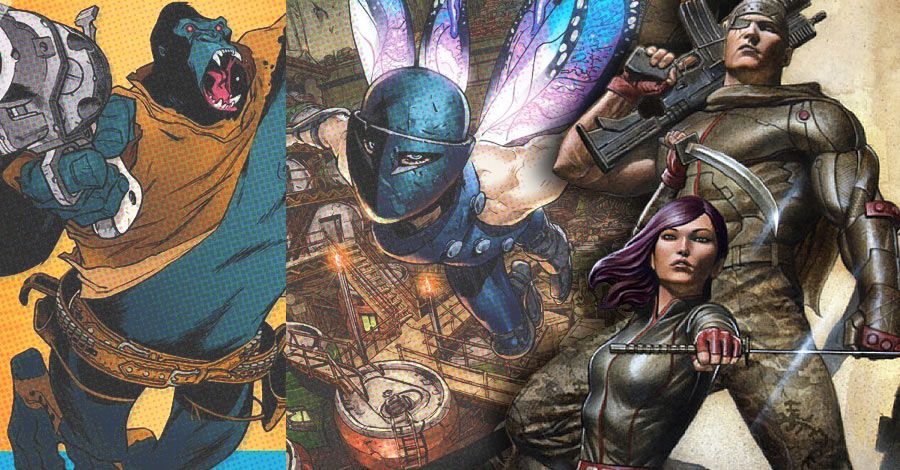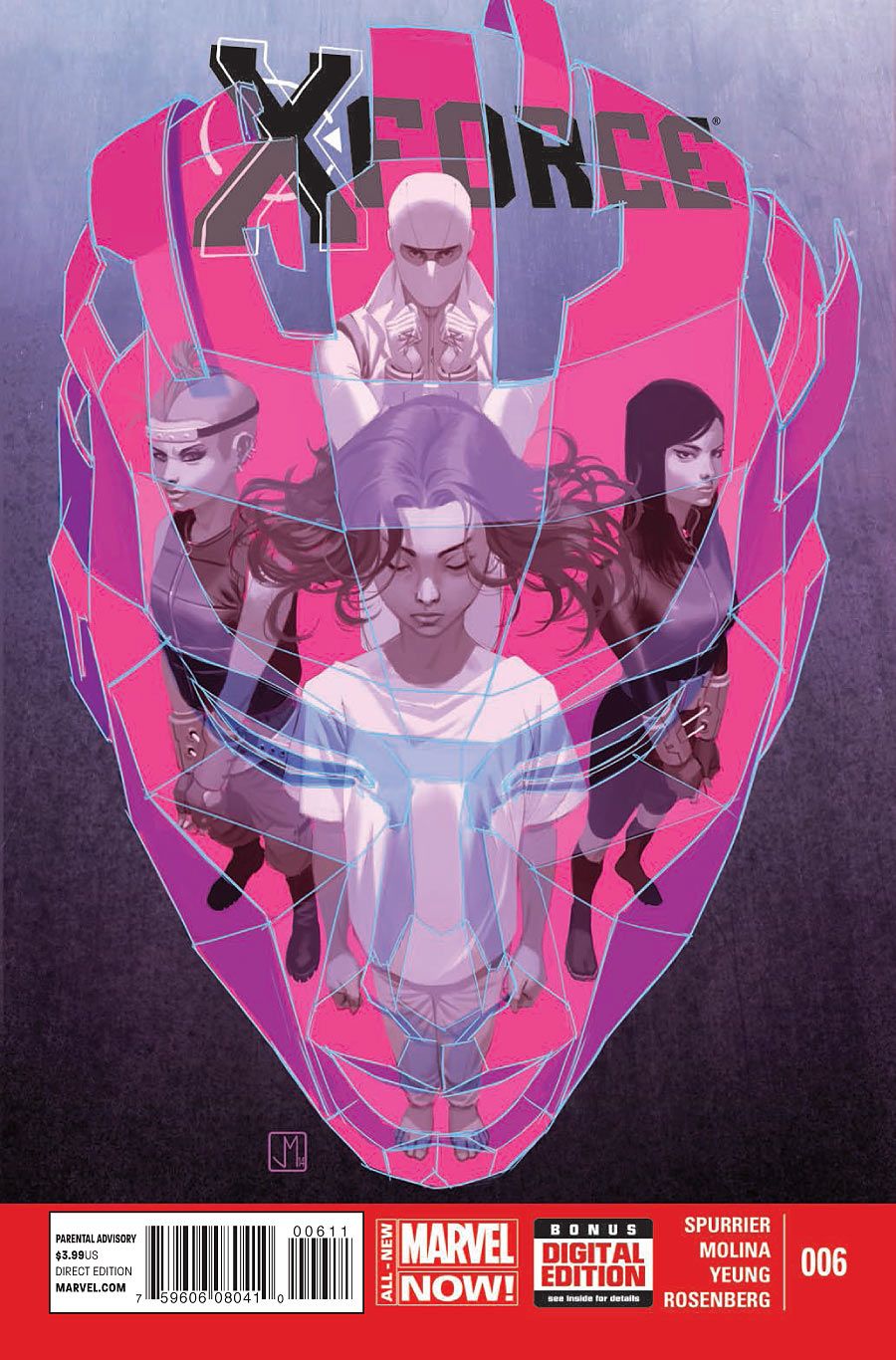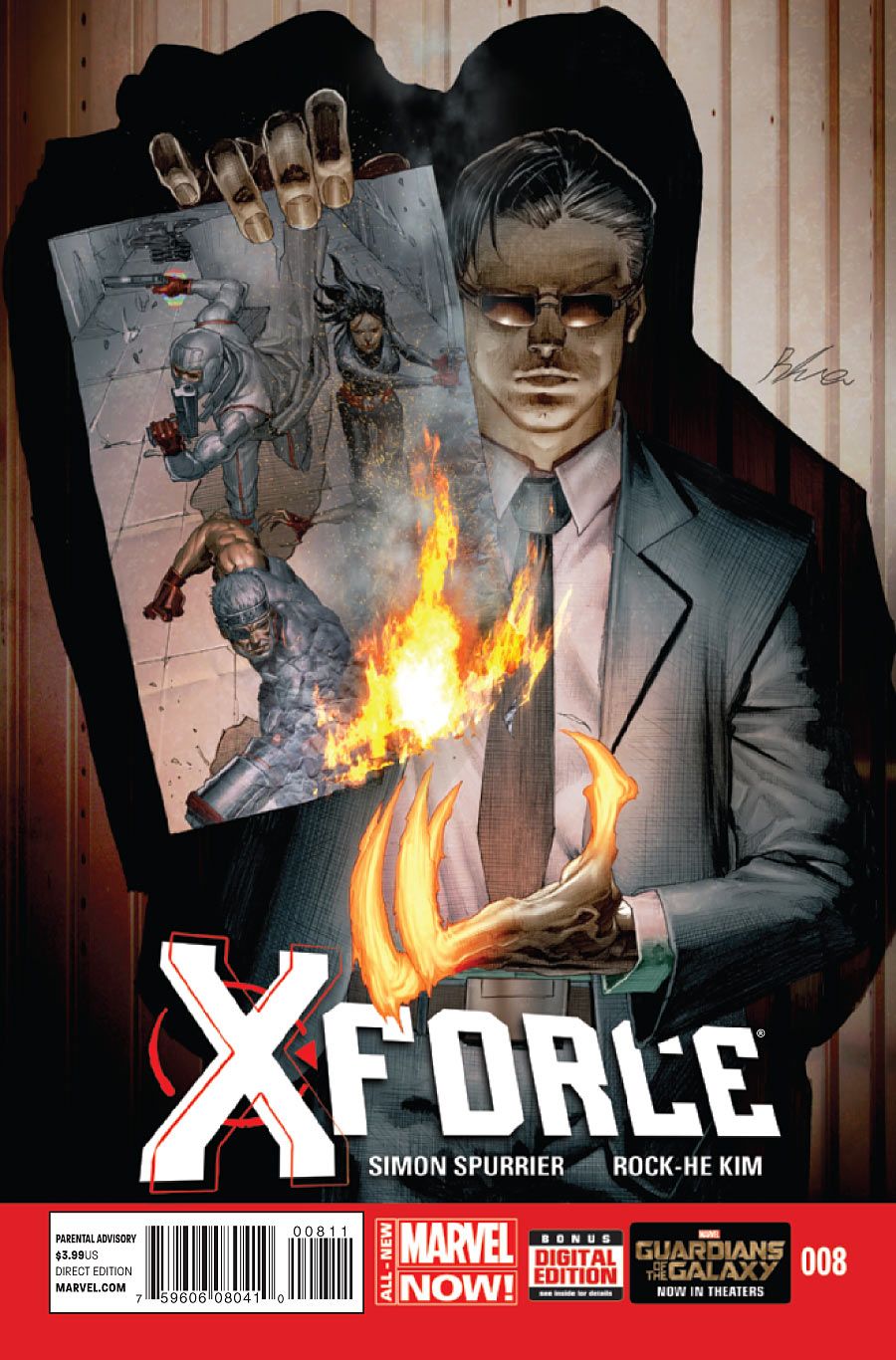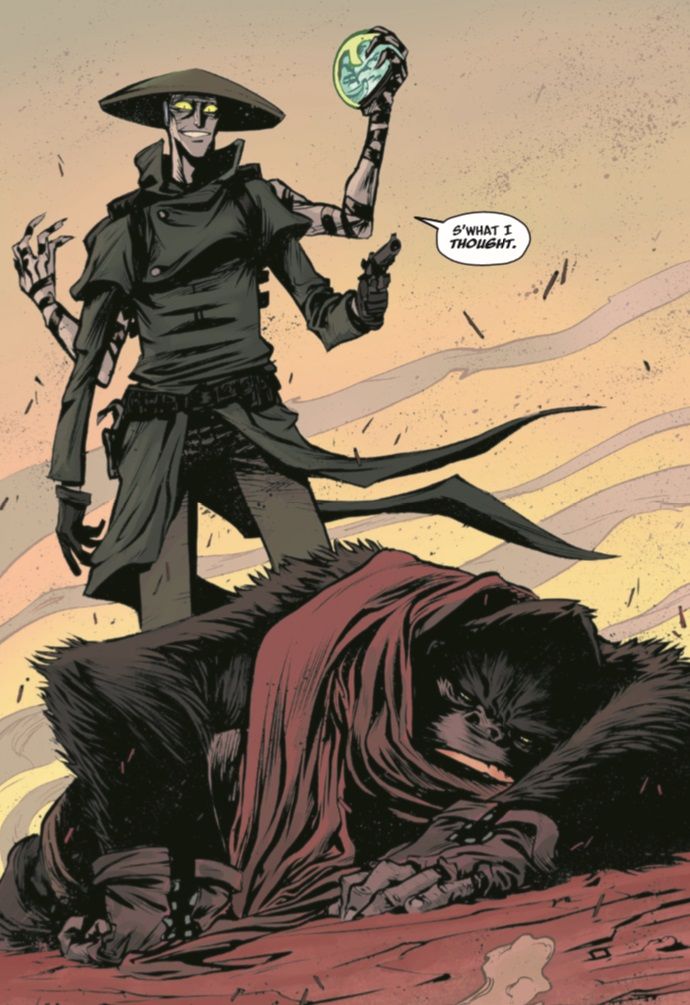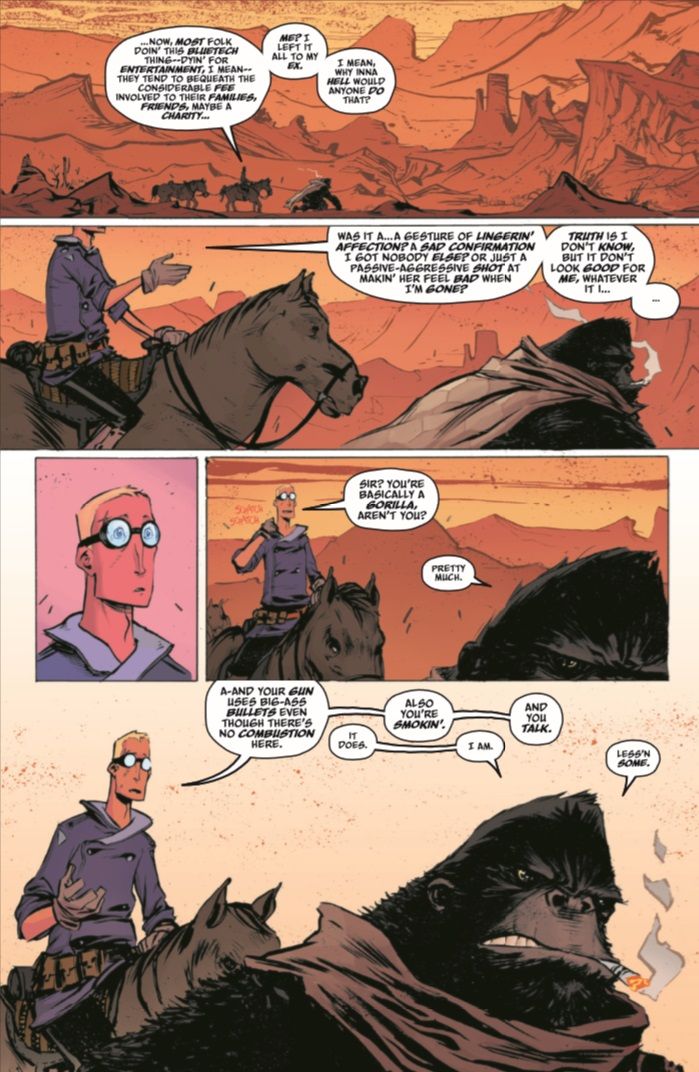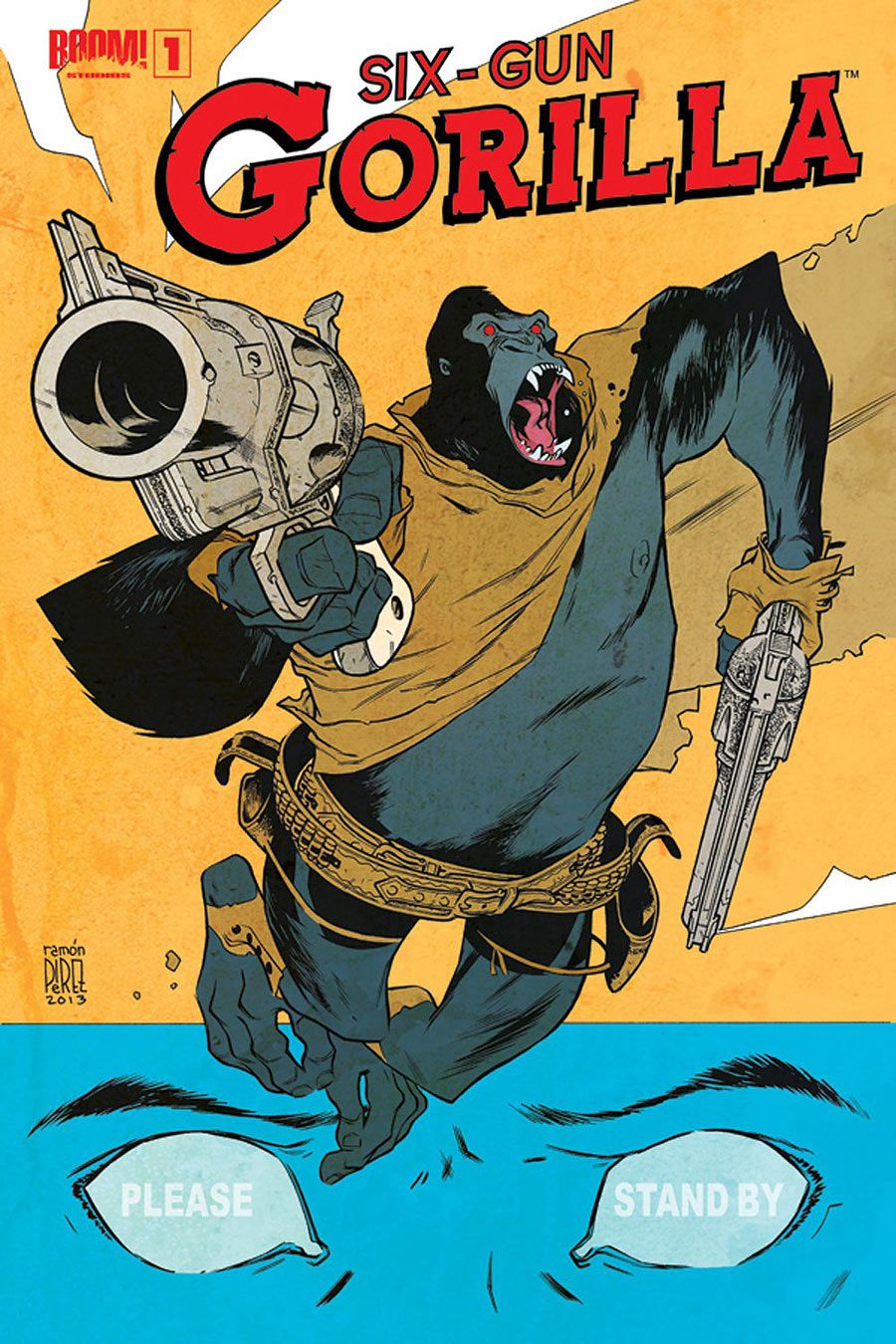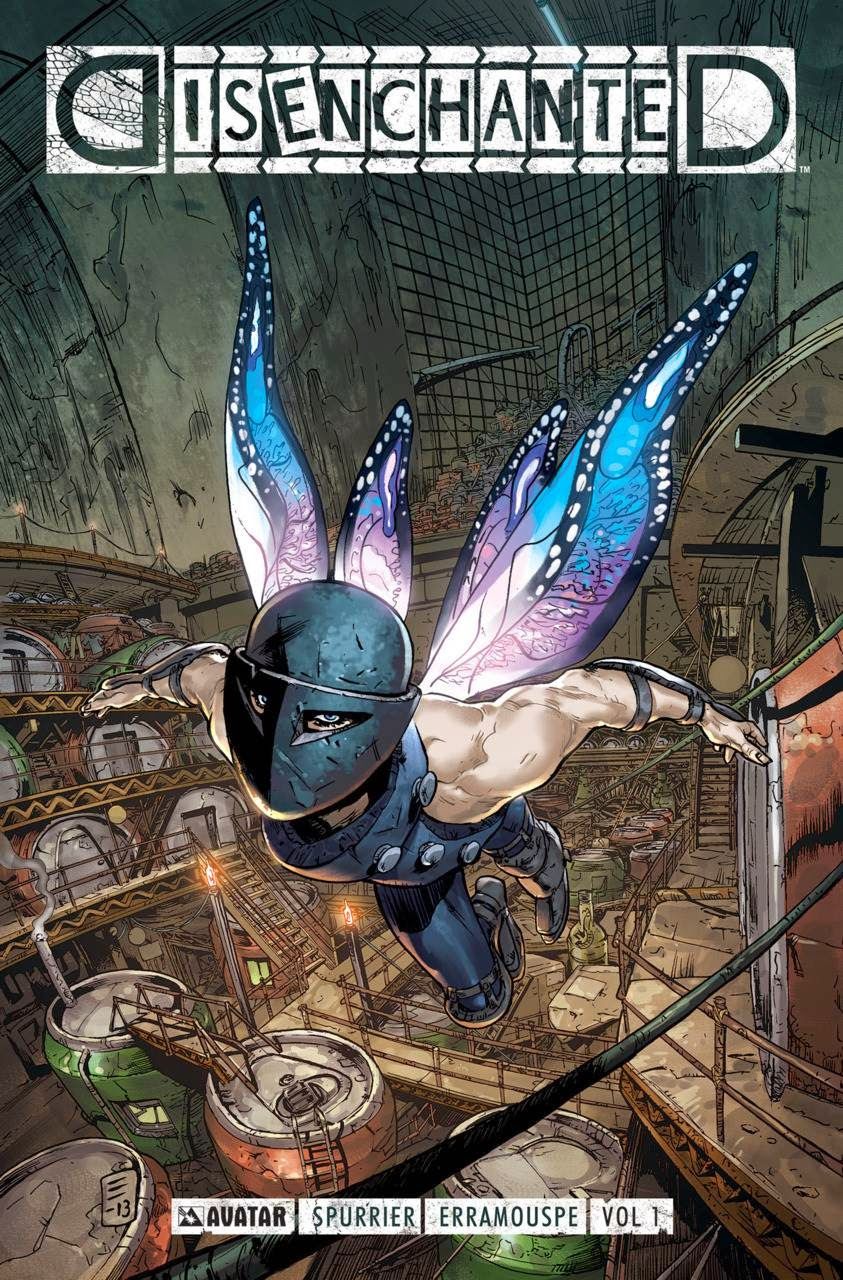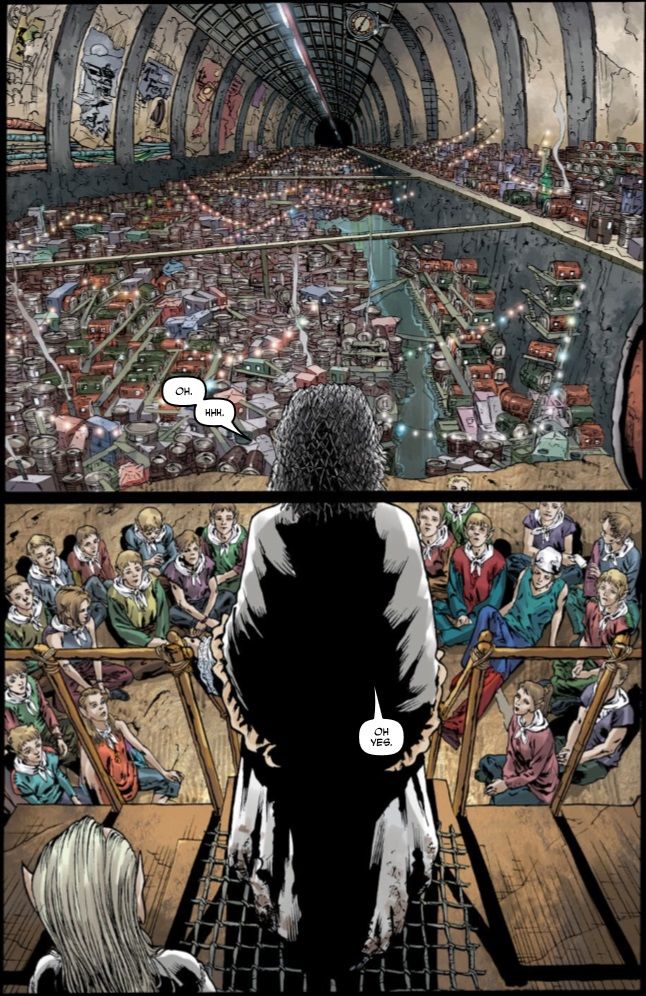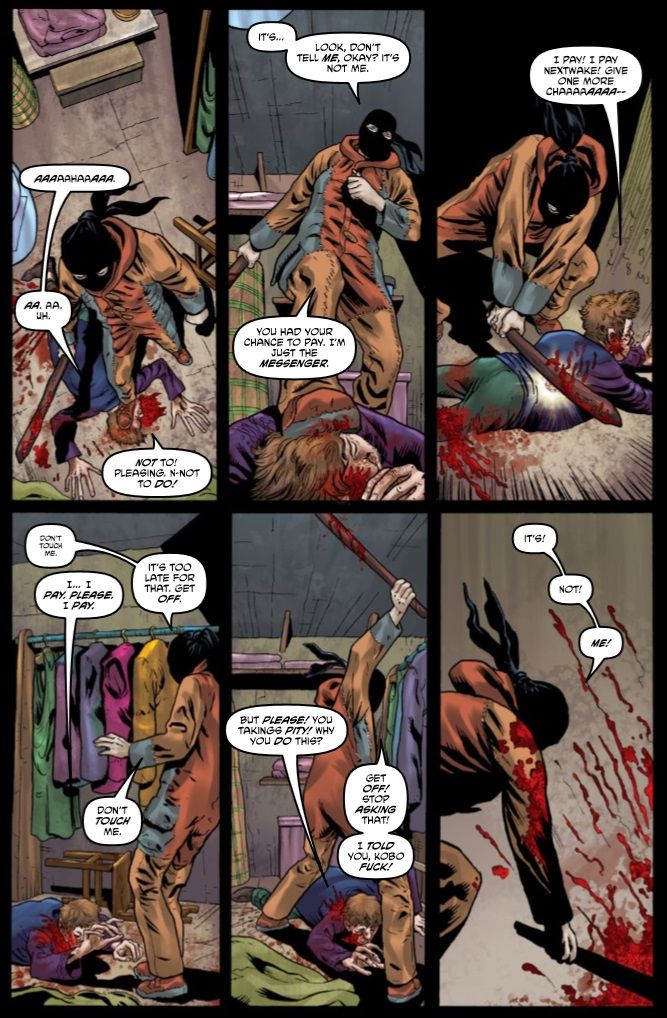The visual nature of comics means that it's very easy to become immersed in the strange and fantastic worlds they depict, exploring the fantastic realities alongside the characters who populate them. The more human and flawed these characters feel, the more believable a fictional world becomes and the more a story resonates with its readers.
RELATED: Spurrier Takes a Broken "X-Force" Team to War
Writer Simon Spurrier understands this storytelling truism, so even though his current projects fall across several different genres, they all share the same element of featuring damaged and haunted characters struggling to overcome not only their personal demons, but the obstacles and adversaries they face. Each and every month, Spurrier utilizes this technique to bring readers into the world of three very distinct series: "X-Force" from Marvel Comics, which chronicles the international exploits of Cable's covert mutant rights strike force; "Six-Gun Gorilla" from BOOM! Studios, which transports the titular simian to an alien world; and "Disenchanted," a weekly webcomic published by Avatar Press that follows the citizens of Vermintown; a miniature and crime ridden metropolis located in an abandoned subway station that's home to the various "little people" of European folklore and legends.
CBR News: The big revelation in "X-Force" #6, that the new mutant known as Meme is actually Cable's daughter, Hope Summers, suggests to me that on one level "X-Force" is about the relationship between" parent and child, a theme you explored in the last X-Book you wrote, "X-Men: Legacy" which focused on David Haller, the son of Charles Xavier. Is this a coincidence? Or do you just find the relationship between mutant parents and children especially compelling?
Simon Spurrier: OH GOD, IT'S TRUE! I WAS RAISED BY A LOVELESS MUTANT HORNET! DAMN YOU FOR MAKING ME SAY IT! I SPENT FIVE YEARS GRIPPING A KNITTING-NEEDLE BETWEEN MY BUTTOCKS AS AN ERSATZ STING! WHY, MOMMA!? WHY WOULDN'T YOU HUG ME LIKE THE OTHER LARVAE? I ONLY EVER WANTED YOU TO REGURGITATE SUGARY FOOD INTO MY MOUTH AND BE PROUD!
And so forth.
Nah, I think it's just one of those fundamental thematic anchors. Parents -- like cravings for bacon, or the urge to argue online -- are simply Things Which Everyone Has, whether they're currently a part of your life or not. The very concept of parenting is therefore a very handy gravitational point around which stories can accrete, and in particular stories which are instantly relatable.
With "Legacy," the story of David's relationship with his father was -- broadly speaking -- actually the story of David's relationship with himself. Which sounds wretchedly New Age now that I say it, but if you've read the bloody thing, you'll know what I mean.
With "X-Force," the approach is a little different. Hope and Cable are (we now know, though Cable doesn't realize it) both active participants in this dysfunctional clusterfuck of a team, so -- as you'd expect -- their parent/child relationship provides a little unpredictable impetus for forthcoming storylines. What's quite interesting (to me, anyway) is that whereas David was often crippled by the condemnation and disapproval he imagined from his father, with Cable and Hope we're going to start seeing the latter being the one who's best equipped to stand in judgement over the former.
In "X-Force," your cast of characters aren't engaging in the typical hero versus villain paradigm. They're more interested in protecting what they view as the "mutant nation." Their first encounter, though, brought them face to face with a man who certainly earned the label of 'villain' -- Volga, the arms merchant who was transforming mutants into living weapons. What inspired the creation of Volga? And is he a good representation of the types of antagonists your cast will encounter?
Note, first of all, that the "mutant nation" credo is Cable's thing. The other team members' mileage may vary on that one. As we've seen, they all have their own secondary reasons for doing what they do.
Volga's a pretty good indication of what I see this iteration of X-Force being all about, yeah. He doesn't wear a super suit, he doesn't want to eradicate a particular part of the human race or subjugate the rest, he's not trying to conquer the world or a particular country, he's not looking to test the mettle of his longtime nemesis and ignominiously crush him. He's just a shit. A really, really, really, really, nasty piece of work with loads of money, who makes his fortune living in the cracks of crude human factionalism and considers "other people" to be synonymous with "things". They can be bought, sold, made, destroyed, played with, thrown away, fondled or tossed in a fire. He's got a thick Russian accent because I liked the idea of making people assume he's a comedy character right up to the point he tears off Cable's arm and burns out his eye. I'm horrible like that.
He's the sort of dyed-in-the-wool (and actually pretty realistic) shithead who, given my own band of superspies to deploy as I saw fit, I'd be tempted to target first.
Probably.
And that's sort of the point. I don't want to spoil things, but part of the perverse M.O. of this book is to gleefully muddy some lines and paint question marks on familiar comic book motives. My central idea for "X-Force" is that they're the guys whose adventures you read going, "Yeah! Yeah! Boom! Slice! Yeah!" Then spend an hour in a dark room concerned that you might be accidentally cheering-on the monsters.
Comics are already groaning with the first bit, y'know? I think it's time we started flag-waving those question marks.
The second arc of "X-Force," which features Domino and art by Rock-He Kim kicked off with issue #7, available now. What do you want readers to know about this story? In terms of plot and themes what is it about?
We-ell, we've learnt that Volga's still out there in some capacity or other, so Cable's obsessive desire to find the guy -- and hence a cure for the condition affecting him and his daughter -- is still extant. That drives a lot of the action in the first few episodes, but we're going to quickly realize we've strayed into darker and deeper waters without quite meaning to. Episode #7's already introduced a mystery villain -- who may or may not be our new big bad, I ain't saying -- plus, there's a lot of weird stuff going on with Hope, Fantomex and Domino.
So! Lots of pieces on the board, all poised to smash together in a very unexpected way. Strangely enough, Episode #8 will appear -- at first glance -- to be a very strange digression, but by its end you're going to have a more solid idea of where our story is going. Plus: Pete Wisdom. Supersoldiers. And Doctor Nemesis trading snark with Faiza Hussain.
And there's one very big piece to this puzzle still waiting in the wings.
With "X-Force," you're adding to the story of an established band of characters, but in the "Six-Gun Gorilla" series that you did with artist Jeff Stokely, you got to do your own take on the titular public domain pulp character. What was that like? What inspired your sci-fi western take on the character?
The short version is that I love Westerns and -- being a stubborn sort of git -- I've always wanted to write one specifically to prove a point. Namely, that if you distilled down all the things which make people call a story "a Western" (and I have) then "being set in the Wild West" ain't one of them. In other words, you can pack some of the most unlikely elements and themes into a story and still benefit from all the wonderful associations that go with that splendid genre: An exquisite sense of space and pace, a tinge of tragedy, the poetry of ultra-violence and so on.
In this case, the bat shit elements I chose to cram in there were an extra-dimensional civil war, clockwork guns, suicide as a form of reality entertainment and a fucking enormous talking primate. It just got nominated for a bunch of Harvey Awards, so I guess we did something right.
Seriously, I could waffle forever about the tropes which underpin a lot of my favorite Western stories: Liminality, the march towards obsolescence and the self-sacrifice of the Old Order on the altar of the New, and similar tedious wank. The bottom line is that Westerns are almost always intricately bound with ideas about mythology and archetypes -- they're very often stories about
The original "Six-Gun Gorilla" was a serialized pulp prose story in "Wizard" magazine which ran for fifteen episodes in 1939. It was a rather humorless story literally about a gorilla in the Old West. What drew me to it was two things: The counter-intuitive brilliance of the title (the first time people hear it, they inevitably bounce back and forth between "that's dumb" and "that's awesome" for ages), and the fact that -- to this day -- nobody knows who wrote it. That felt too appropriately mythical to ignore. The ape settled into my weirdo meta-fictional science-fiction Western like a pistol into a perfectly-made holster, and bound the rest of it together.
There will be some "X-Force" fans reading this piece who might not yet have read "Six-Gun Gorilla" -- what do you want them to know about the series? If I were to use cake as a metaphor, it seems like the frosting of the series would be a wildly imaginative sci-fi western with an anthropomorphic character and the cake part would be a tale about the power of stories. Is that a fair description?
That's -- actually, yeah, that's pretty good. I tend to tell people that "6GG" is a sort of spiritual indie cousin to my run on "X-Men Legacy," in the sense that they're both about evolving a very emotional meta-story from some very unlikely ingredients. But that's a high-falutin' version of the blurb, so here we go:
"Six-Gun Gorilla" is the story of a man so heartbroken that he sells himself to an entertainment company. He's sent off to a bizarre civil war on another world: A clockwork frontier where the laws of physics don't work properly. His one and only job is to die -- to commit a thrilling suicide in order to entertain the paying subscribers back home, who're watching it all through his eyes. But he can't even get that right. He's saved at the last moment by the most unlikely hero imaginable: An enormous and heavily-armed gorilla who seems linked in some psychedelic way to the world they're both now forced to wander.
It's part sci-fi, part horror, part romance, part war-story; all Western. It's about loyalty and corporate scumbaggery; it's about having a meaning to your life -- or not; it's about the importance of endings and the vitality of fiction. It's about a 600lb primate turning bad guys to pink mist with guns bigger than your head.
Secretly, it's about a loser coming to terms with loss.
I don't want to spoil the end of the series for those who may not have read it, but would you be interested in revisiting the world you created in "Six-Gun Gorilla" someday?
Yyyeah, possibly. I mean, there's a stock answer here which I give when people ask about "X-Men Legacy." I happen to believe stories can only have true resonance and meaning -- like people's lives and the things they do throughout -- when there's a tacit understanding that there's eventually an ending. If you're going to write an ongoing series you're smart to build-in modular endings: constantly bringing things to a satisfying close, then developing them onwards with new themes and new ideas. Otherwise it's just the crack cocaine of the narrative world: an endless cheap fug of vanilla pleasure which never challenges and never transcends -- but you can't stop coming back for more. Horrid.
With "Six-Gun Gorilla," like "Legacy," I had a very specific story I wanted to tell. And I told it. It's finished, done, completo, step away, let it lie. But. There may be other stories which I want to tell later, which just happen to involve some of the same characters or locations. It's definitely something Jeff and I have spoken about. I have a few ideas, but I'm not going to write a sequel just for the sake of writing a sequel. I want it to be triggered by that same sense of elegance and coalescence I described above -- when "6GG" himself entered the mix -- otherwise there's just no point.
Jeff and I will collaborate again very soon, mind you. Can't say more about that just now.
In fact, as I mentioned above, I just heard this week that "Six-Gun Gorilla" in general and Jeff in particular were nominated for a whole bunch of Harvey Awards, which is so heartmelty proudmaking that I can't even say. It flew slightly under the radar when it first arrived, so whichever way the final ballot goes, we're delighted at the recognition.
With "Six-Gun Gorilla," you told a complete story that was six issues in length. with "Disenchanted," your webcomic series from Avatar, featuring art by German Erramouspe, you're delving into what feels like an epic-length story that's available right now for people to read for free. What do you want people who've never visited "Disenchanted's" setting of Vermintown before to know about the series?
"Disenchanted's" one of those high-concept gigs where the initial idea takes the form of a whole world -- a status quo, a setup -- and then the specifics of the story just percolate through it naturally, like sexy, gloopy narrative espresso. In this case, the idea behind the world couldn't be simpler:
Nobody believes in fairies any more. Or goblins. Or leprechauns or kobolds or brownies or boggarts or piskies. Once upon a time, the "little people" of Europe's collective folkore were an everyday part of human life, taken on faith. They soured milk, flicked dew onto cobwebs and tangled hair in the night. But not any more -- now, we've got science to explain all that.
They've disappeared: unneeded.
But they haven't vanished entirely. Instead, they've done what all people do when they're dispossessed, harried and disenfranchised. They've huddled together into a city. A grimy, miniature metropolis made of soda cans, cereal boxes and milk cartons, constructed in an abandoned London Underground tube station.
And like all city societies, the people's traditions start to degrade. Their cultures start to fray and homogenize -- or else radicalize and spit sparks. Gone are the silver bells, quaint flowery dances and magical glamours of the wild. In their place are sorcerous drugs, racial prejudice, gang warfare and inch-high mobsters. "Disenchanted" is a story about the city where Magic went to die.
Actually, it's an ensemble tale about a single family of immigrants in this seething cocktail of pressures, temptations and dangers. The way they each respond to the erosion of the Old Ways, spinning off on different violent tangents. The go-to logline is, it's "The Borrowers" meets "The Wire."
Deep down, underneath it all -- because, hi, this is me -- it's bubbling with heavy themes about tradition, culture and the decay of wonder.
And yeah, it's all free. Twelve new pages every week, at the website noted above, then collected up into beautiful TPBs and sold in the normal way. It's a weird financial model, but it's worked incredibly well so far.
What's it like writing "Disenchanted" compared to the other two books we've discussed? Does the webcomic format mean you write it differently?
Slightly. Though part of the challenge is that the webisodes all get collected up for a print edition too, so it really has to work in both formats.
I could bore you silly with all the consideration that goes into that, but it's dreadfully involved. It boils down to simply giving oversight to trying to maintain the reader's attention -- and not letting them get too lost -- in between shorter episodes, and finding interesting ways to regulate the pace. The art of writing comics is the art of pacing out action, always, always, always, so it pays to work in various formats.
The other interesting part of the "Disenchanted" experiment has been all the world-building stuff we've been adding to the webcomic host-site so that readers can keep on exploring even when each episode is done. There's a whole bunch of wiki articles -- more being added all the time -- and a series of maps of the city. Which, no joke, I suspect are the most detailed, insanely complex and downright incredible pieces of comic book cartography ever made. They are mindblowing -- do check them out.
Let's conclude by chatting about the artists who helped and are helping you bring these stories to life. What do you think "X-Force's" Rock-He Kim, "Six-Gun Gorilla's" Jeff Stokeley, and "Disenchanted's" German Erramouspe are bringing or have brought to these projects?
Rock-He was a discovery by Marvel's talent-hunting arm, I think -- part of a Korean studio based in California. My editor proposed him for "X-Force," I liked what I saw, and off we went. He's just right for the grimsplodo dark-and-dirty vibe we wanted to hit, and it's been amazing how quickly he's embraced the book's nasty sense of humor.
German was another fortuitous assignee. We needed someone who could not only handle the character interactions and the "human" side of "Disenchanted" -- plus drenching the whole thing in the appropriate layers of grime -- but could also be very technical and inventive with designing this miniaturized world. Architecture, clothing: when you're functioning at a whole different scale it all has to be thought-through very carefully. He's great.
And then there's Jeff, who miraculously transformed my weirdo book about a mournful librarian and a monkey into something which writhes with energy and life. I can't overemphasize how lucky I was to get him working on "Six-Gun Gorilla" -- that despicably talented little pencil-goblin is going to be very, very big in our industry -- and in all his beardy glory, he's become a firm friend.

